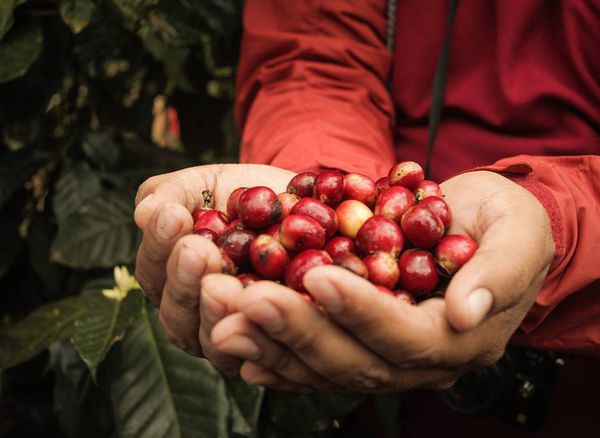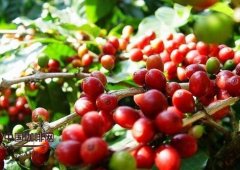Sun-treated fine coffee
Coffee beans are treated in the following ways: sun (Natural); half-sun (Semi-Natural or Pulped-Natural); Honey processing (honey) and Washed (washing). Our most common treatment is Washed. Washing treatment means that after the coffee fruit is harvested, the immature and moldy beans are screened out by a special way, and then the peel is removed, and then soaked in a large tank for fermentation. The pectin of the fermented coffee beans falls off naturally, and then dried to remove the shell. The countries that use more water washing are mainly Central and South American countries and African countries. The characteristic of washed beans is that the taste spectrum is clean and the flavor is clear, but the sweetness is lower. Sun treatment (Natural/Dry processing), that is, the harvested coffee fruit is hand-selected, the whole fruit is exposed in a ventilated and dry sun, and then the peel, pulp and shell are removed.
The main countries that use the sun treatment are some African countries and Brazil. the sun treatment is greatly affected by the treatment environment and technological level, so the quality varies, but on the whole, the coffee beans treated by the sun have high sweetness. it has a unique fermentation flavor, but once the fermentation flavor is not played well, it will be transformed into stink, rotten milk, mildew and so on. Half-sun, can also be called half-washed, can also be called peel sun (Semi-natural/pulped-natural). That is, the peel of the coffee fruit is removed in the same way as washing, and then the coffee fruit with pectin is exposed to dry and ventilated sunlight, and then shelled. Half-sun is mainly used to treat coffee beans in Brazil, and half-sun is a unique treatment in Brazil. Half-sun-treated coffee beans do not mix with miscellaneous flavors as easily as sun-treated coffee beans, while keeping part of the taste clean and with a small amount of dried fruit-like fermented flavor.

Important Notice :
前街咖啡 FrontStreet Coffee has moved to new addredd:
FrontStreet Coffee Address: 315,Donghua East Road,GuangZhou
Tel:020 38364473
- Prev
The principle of steaming? what is steaming?
About the steaming of coffee. Many baristas or enthusiasts have different opinions on the way, time and amount of steaming, and learn the process of steaming from the physics of steaming in coffee making. When the coffee bean is ground into a coffee powder, the coffee powder we can see with the naked eye is a whole one, but in fact, the microstructure of the coffee powder is similar to that of a honeycomb.
- Next

The most frequently asked questions for beginners
Q: Why does black coffee taste sweet? A: Raw coffee beans contain about 5-6% sugar. After high temperature roasting, caramelization occurs, which forms the source of coffee flavor and bitterness, while the sugar in coffee beans is sweet. In addition, the tannins released by roasting high-quality coffee beans can also be slightly sweet in their astringency.
Related
- Beginners will see the "Coffee pull flower" guide!
- What is the difference between ice blog purified milk and ordinary milk coffee?
- Why is the Philippines the largest producer of crops in Liberia?
- For coffee extraction, should the fine powder be retained?
- How does extracted espresso fill pressed powder? How much strength does it take to press the powder?
- How to make jasmine cold extract coffee? Is the jasmine + latte good?
- Will this little toy really make the coffee taste better? How does Lily Drip affect coffee extraction?
- Will the action of slapping the filter cup also affect coffee extraction?
- What's the difference between powder-to-water ratio and powder-to-liquid ratio?
- What is the Ethiopian local species? What does it have to do with Heirloom native species?

